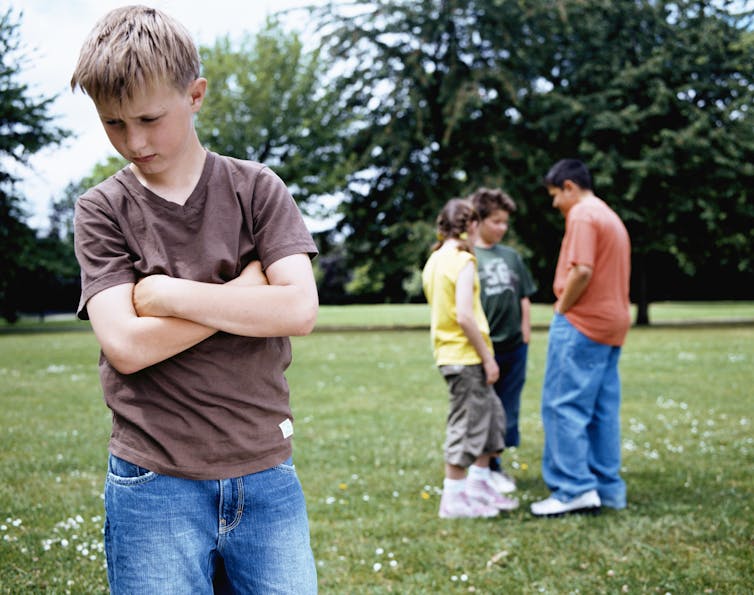A clique is a group whose members spend a lot of time together.
Hannah L. Schacter, Wayne State University

Curious Kids is a series for children of all ages. If you have a question you’d like an expert to answer, send it to curiouskidsus@theconversation.com.
When and why do girls start forming cliques? – Anushka, age 14, California
The Plastics. Will, Mike, Dustin, Lucas, Max and Eleven, also known as The Party. The Pink Ladies. Teenage Mutant Ninja Turtles. These groups come from different decades, universes, shows and movies, but they all have one thing in common: They’re cliques.
Ever wondered why people form these tight-knit groups? Scientists have, and they’ve done research to try to answer this question.
I’m a psychology professor who studies how kids and teens interact with their peers. I research both the good and bad parts of teen relationships, including friendships and bullying. Cliques can be a natural part of those relationships.
What are cliques?
Simply put, cliques are groups of people who spend a lot of time together. Although you might think cliques are just for girls, anyone can be part of a clique, no matter their gender. They can also range in size, with some including just a few kids and others with up to nine or 10 members.
Typically, people in a clique have things in common, such as what clothes they wear, where they like to hang out, the sport they play or what music they listen to. Some kids also belong to multiple cliques that reflect their different interests and activities. For example, you might hang out with a group of kids from drama club at school and another group of kids from your travel soccer team on weekends.
When and why do cliques form?
It’s human nature for people to want to be a part of a group. For thousands of years, being part of a group has been a way for people to stay safe from predators and get better access to important resources, such as food and shelter. Belonging to a group can also make you feel safe and supported.
Believe it or not, cliques can start forming as early as preschool. Kids of all ages like to be connected with peers who share their interests and make them feel included.
Cliques become more common and influential, however, during late childhood and adolescence. Compared with younger kids, teens spend more time with their peers in and outside of school. Plus, their brains go through changes that make them want to be around friends and fit in more.
Your feelings about a clique may depend on whether you’re in it or on the outside.
How do cliques affect members and outsiders?
Cliques can have both good and bad effects. If you’re in a clique with nice and fun kids, you might feel less anxious and more confident. But if you’re in a clique with kids who are mean or break the rules, you might also start to act in negative ways and have problems with friends or romantic relationships in the future.
Cliques can sometimes make others feel left out. Even though everyone wants to feel safe and supported, some kids get really focused on being popular – in the process, they might exclude others. Kids who aren’t in a clique or who are at the bottom of the clique hierarchy might feel more lonely and sad.
The power of friendship
Although cliques can be tough to navigate, you don’t need to be in a big group to feel happy and supported. Even having a couple of good friends can make a big difference.
Friendships are special because they’re all about mutual respect and caring, not just trying to fit in. If you’re struggling with cliques at school, keep in mind that having one or two close friends who know you really well and are always there for you can be just as meaningful and fun as being in any clique.
Making friends can be hard, but remember, everyone is trying to find their own niche in the world. Hang out with people who make you feel good and who have your back. It’s not about having the biggest or coolest group – it’s about finding the right people who support you.
Hello, curious kids! Do you have a question you’d like an expert to answer? Ask an adult to send your question to CuriousKidsUS@theconversation.com. Please tell us your name, age and the city where you live.
And since curiosity has no age limit – adults, let us know what you’re wondering, too. We won’t be able to answer every question, but we will do our best.![]()
Hannah L. Schacter, Assistant Professor of Psychology, Wayne State University
This article is republished from The Conversation under a Creative Commons license. Read the original article.

























































